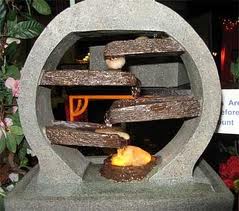For many people, the ancient Chinese study of Feng Shui seems shrouded in mystery. From “Chi” to the Ba Gua and its graceful yet impenetrable Chinese characters, many feel they have no hope of understanding how Feng Shui works, and give up on pursuing its many benefits.
 But the power of Feng Shui lies not in what FengShui does, but in how the student of Feng Shui perceives his or her surroundings. In that sense, Feng Shui works not because it does something, but because its practitioners perceive aspects of surroundings that many people don’t perceive. Once the practitioner understands the surroundings, he or she consults the established texts and methods to determine how to alter that environment in an auspicious manner.
But the power of Feng Shui lies not in what FengShui does, but in how the student of Feng Shui perceives his or her surroundings. In that sense, Feng Shui works not because it does something, but because its practitioners perceive aspects of surroundings that many people don’t perceive. Once the practitioner understands the surroundings, he or she consults the established texts and methods to determine how to alter that environment in an auspicious manner.
The practice of Feng Shui was developed in ancient times and has been carefully refined over the millennia. In the most ancient times, Feng Shui practitioners used knowledge of the stars and, later, the compass, to orient homes in propitious manner for the well-being of the occupants.
Often, this orientation took advantage of several benefits that, upon modest reflection, seem obvious: orienting the home to receive the most sunlight in the winter, or the greatest shade in the summer. However, in the modern world, few of us would recognize these benefits without and explicit effort to do so, so even on its simplest and most ancient level, Feng Shui provides what is for us a “new” understanding of our environment.
As ancient practitioners deepened their understanding of their natural surroundings, they developed what is now known as the “five elements theory.” The five elements, Wood, Fire, Earth, Metal, and Water, are connected through and interact with “Chi.”
English translations regularly use the term “life force” as a translation for chi, but there is no term in English that captures the meaning of chi well – this may be one reason Feng Shui seems so mysterious to westerners. Chi is a vital element or an energy field that expresses or captures the relationship between the energy of living things and the energy of the inanimate world.
A last important concept underpinning Feng Shui is the concept of Yin/Yang. This concept is founded in the recognition that almost everything we can experience can have either a positive or a negative effect. Yin yang theory recognizes, in essence, that opposites cannot exist without each other, thus they are inseparable.
Feng Shui, in so far as it is used today, is used for two purposes. Both require analysis of the environment with respect to understanding the interaction of the five elements and chi, and balance with respect to yin and yang. First it is used, as it was in ancient times, to find the most auspicious site, portion of a site, or orientation of a building on a site. Second, and more commonly, it is used to maximize positive flow of energy and the best balance of opposing forces of yin and yang in a room, office, or home.
So, while Feng Shui may seem mysterious, the concepts that underlie it are ancient, tested again and again, and, often, easily understandable.
Michael Schnippering is the founder of Feng Shui at Work. He is committed to the true art and science of Feng Shui. Over the years his Feng Shui practice has taken him to various parts of the United States, Germany, France, Spain, Colombia and Argentina. If you’d like to learn more about Feng Shui, read Michael’ blog and follow him on Twitter @fengshuiatwork


